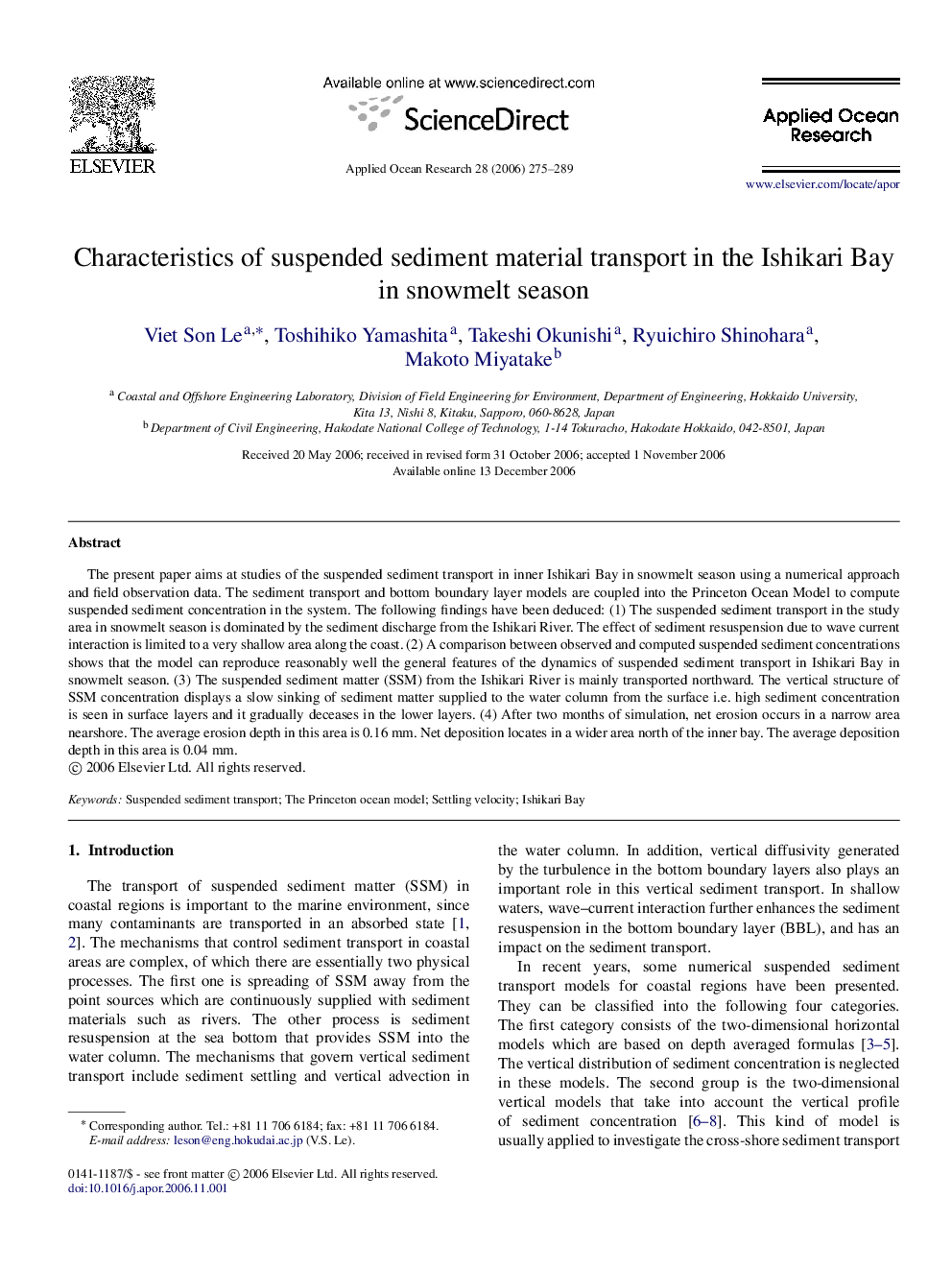| Article ID | Journal | Published Year | Pages | File Type |
|---|---|---|---|---|
| 1720505 | Applied Ocean Research | 2006 | 15 Pages |
The present paper aims at studies of the suspended sediment transport in inner Ishikari Bay in snowmelt season using a numerical approach and field observation data. The sediment transport and bottom boundary layer models are coupled into the Princeton Ocean Model to compute suspended sediment concentration in the system. The following findings have been deduced: (1) The suspended sediment transport in the study area in snowmelt season is dominated by the sediment discharge from the Ishikari River. The effect of sediment resuspension due to wave current interaction is limited to a very shallow area along the coast. (2) A comparison between observed and computed suspended sediment concentrations shows that the model can reproduce reasonably well the general features of the dynamics of suspended sediment transport in Ishikari Bay in snowmelt season. (3) The suspended sediment matter (SSM) from the Ishikari River is mainly transported northward. The vertical structure of SSM concentration displays a slow sinking of sediment matter supplied to the water column from the surface i.e. high sediment concentration is seen in surface layers and it gradually deceases in the lower layers. (4) After two months of simulation, net erosion occurs in a narrow area nearshore. The average erosion depth in this area is 0.16 mm. Net deposition locates in a wider area north of the inner bay. The average deposition depth in this area is 0.04 mm.
